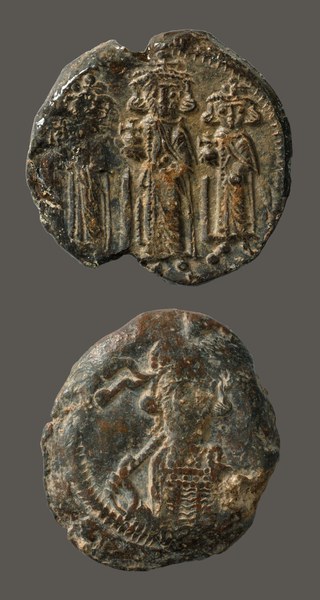
By overthrowing Phokas in 610, Herakleios founded a dynasty that would rule Byzantium, with one interruption, until 711. Of the six members of his family to rule Byzantium only three, Herakleios himself, Herakleios Constantine, and Constantine IV, died natural deaths as emperor. Heraklonas was mutilated and deposed, Constans II was murdered in his bath, and Justinian II was mutilated, deposed, restored his throne, and then deposed a second time and killed. The Herakleians held power during a time of great change. Herakleios ruled a recognizably late Roman empire that stretched from the Atlantic to Iraq and from the Balkans to Egypt. He also led Byzantium to victory in the last great war with Persia. By the time Justinian II was beheaded, Byzantium was well on its way to transforming into its medieval guise. The empire was confined to Anatolia with minor outposts in Italy and the Balkans; there was no Persian Empire, and the Arab Caliph held sway from the Atlantic to the borders of India. The seals of the Herakleians are interesting for the consistency with which they display the whole imperial family, not just the reigning, senior emperor.

The seals of Herakleios are the first from the Byzantine period to depict the emperor with his associates. As you can see above (first seal), Herakleios was initially shown alone. His son, Herakleios Constantine was born in 612 and from 613 he appeared alongside his father (second and third seals). A final addition to the family portrait was Herakleios's second son, Heraklonas, who was depicted on seals starting in 632 (fourth and fifth seals). Herakleios also made the novel and rarely repeated decision to show himself and his sons aging. By 616 the emperor has a long beard, by 629 Herakleios Constantine approaches his father in height (third seal), and although Heraklonas is shown as a small boy in 632, by 638 he had grown taller (fourth and fifth seals).

Herakleios's successors continued his policy of visually associating their family with themselves on their seals. Constans II's earliest seals show him as a beardless youth. Later in life he is shown bearded before associating his son, Constantine IV, with him in 654 on a seal that replicated the design of that depicting Herakleios and Herakleios Constantine from 629-631. In 659 Constans changed his seals for a second time, adding his other sons Herakleios and Tiberios.

Upon becoming senior emperor following his father's assassination in 668 in Sicily, Constantine IV continued to show his younger brothers on his seals. The design of these seals is almost indistinguishable from the last group depicting Herakleios, Herakleios Constantine, and a grown Heraklonas from 638-641. Constantine, however, wanted to remove his brothers from power to clear a path to the throne for his son, Justinian. In 681 Constantine arrested his brothers and had them mutilated to make them ineligible to rule. In the same year Constantine dropped his brothers from his seals, choosing a design that looked back to the fifth century golden solidi, showing the emperor in military costume.
The last family seal of the Herakleian dynasty is that of Justinian II's second reign, which depicts him and his son Tiberios. The design is a new one, and reflects a revival in the quality of engraving and artistry on seals and coins at the beginning of the eighth century. This seal (Zacos-Veglery, no. 29) depicts the two emperors holding a cross potent on steps between them. On the obverse, the Mother of God, holding Christ on her left arm, is flanked by two crosses superimposed on stylized cypress trees. This program is strikingly different from the designs that were retained with very few changes by Justinian's predecessors. Nevertheless Justinian's seal asserts the same ambition for dynastic continuity, and looks forward to the composition employed by the Macedonians almost two centuries later.



